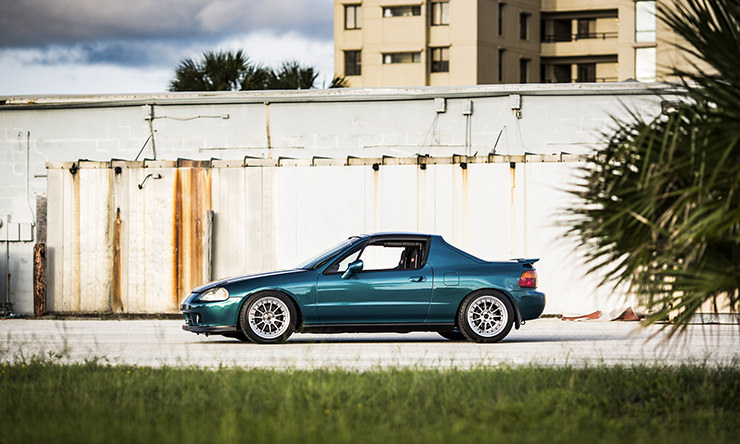Photos via Jonathan Dehate
Our society births two types of people, those who dream and those who do. The dreamers spend an eternity wishing for a change, for a door to open, or for a life improving opportunity to be presented. Then there are the doers, the people who take nothing for granted and pour their soul into their passion to create their own change, kick down the doors of resistance, and create their own opportunities. Doers like Wray Gillette and his 1995 Honda del Sol have helped to make the automotive culture what it is today.
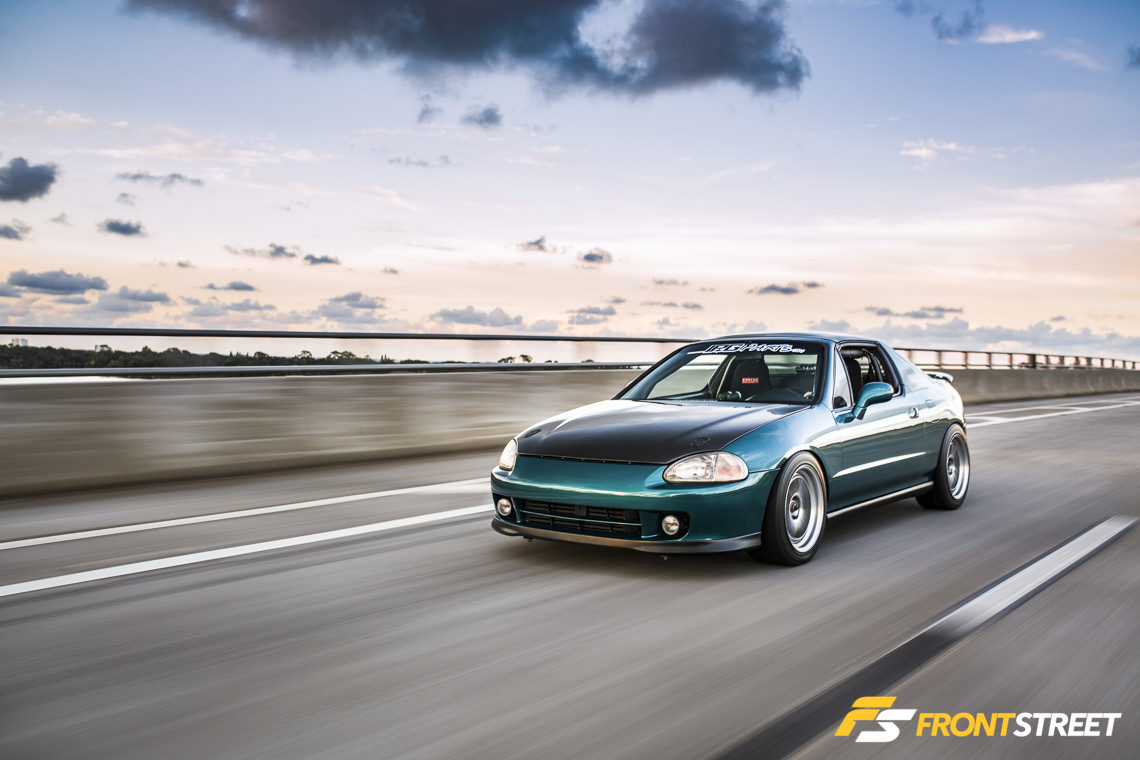

What is the significance of the Honda del Sol? Every now and then, there are vehicles developed which never reach the impact desired by their marque. For Honda, this was the Civic’s little brother, the third-generation CR-X known as the Honda del Sol – meaning of the sun in Spanish. This stylish targa-top – half convertible – economy car based on the Civic chassis entered production in 1992, then underwent a single facelift before production was halted in 1997, with only 75,000 units produced in that time period.
It took a 15-year-old’s dream to feed life into this underdog chassis to create the masterpiece you see today. Yes, Gillette had only been on this Earth for fifteen years when he laid eyes on this exact del Sol, but his addiction for the automotive world started much sooner.
“My earliest car-related memory would be riding along with my parents to Corvette club meetings in my dad’s 1964 Corvette. I would actually lie in the back area behind the seats, the space where the convertible top folded into. Something like that may be frowned upon today, but it was the only way to fit the three of us in the car at the time, and I enjoyed it,” says Gillette.

It wasn’t until 2004, while perusing his local Florida-based newspaper’s classifieds section that Gillette found a one-owner Del Sol with only 37,000 miles tallied on its virgin driveline. The asking price was just out of reach, but he and his father went to look at the pristine, low-mileage car anyway. After negotiations fell through, the car sold to another buyer. A few months passed, and Gillette glimpsed a familiar car for sale in a parking lot in the area. Surprisingly enough, it was the exact car he had tried to buy months prior. The owner of the car had purchased it for his son, who then decided he was looking for something different.

Gillette recalls, “The del Sol was a car that I saw as an affordable, fun and somewhat sporty car that differed from your typical Civics and Integras at the time. The two-seated targa body style drew me in.”
After a couple days, they agreed on a suitable price and Gillette took home his beloved first car.
Not being able to drive legally, yet owning your own car is the perfect recipe to drive ambition levels through the roof. Gillette spent his entire first year with the car daydreaming of everything he wanted to change, while slowly modifying the things he could afford.


A few years into ownership, he began using online-based forums like Honda-Tech.com to source inspiration for his build, or to find local meets to connect with like-minded enthusiasts. This instigated a new focus, as he began to enjoy the cleanliness of rare OEM Honda pieces from the Japanese market. By 2007, he used his graduation money to buy a turbo setup for the stock D16Z6 engine, and his first set of ‘real wheels’ – a term that us in the import car community throw around meaning non-replica wheels manufactured from the original company by which they were designed. With the new Advan RG wheels and T3 turbo setup, Gillette piloted the car to a 13.2-second pass down the dragstrip, at 107 mph – a quite-respectable performance from the four-cylinder engine, and a far cry from its capabilities when purchased. From this point on, the turbocharged performance of the vehicle had him hooked on modifying his car. Continuing with odds and ends at a time before there were so many avenues for enthusiasts to procure their favorite rare parts, he found an authentic Mugen rear spoiler for the car on eBay UK and bought it without hesitation.
“It was the holy grail of del Sol parts at the time, and a piece that will never leave the car!” he exclaims.
Because the car was also incredibly reliable with its factory powerplant still in place, he took the car for its first long-distance journey in 2008, more than twelve hours away to the city of Nashville, TN for a huge import car gathering named Import Alliance; it was at this event where I made his acquaintance for the first time.
“I had already made many friends through local forums and meets, but it wasn’t until Import Alliance that I really started making friendships with enthusiasts all over the country,” says Gillette. “It was an event that I would attend religiously for the next 6 years.”



As the years passed, Gillette made many more journeys to Import Alliance, enjoying the boosted engine’s performance. All good things must come to an end, though, and the factory engine had begun to show signs of wear, with irritating overheating issues rearing their countenance. This spawned the next chapter of the car’s life, as a new heart meant more potential performance gains and more to build.
“I found a deal on a used B18C1, which I later found to have low compression before I ever had a chance to put it in the car. I tore the motor down with the intent of just a stock rebuild and a turbo for a fun, reliable daily driver,” he says.
“It was this point that the build took a drastic turn, and began to snowball uncontrollably.”
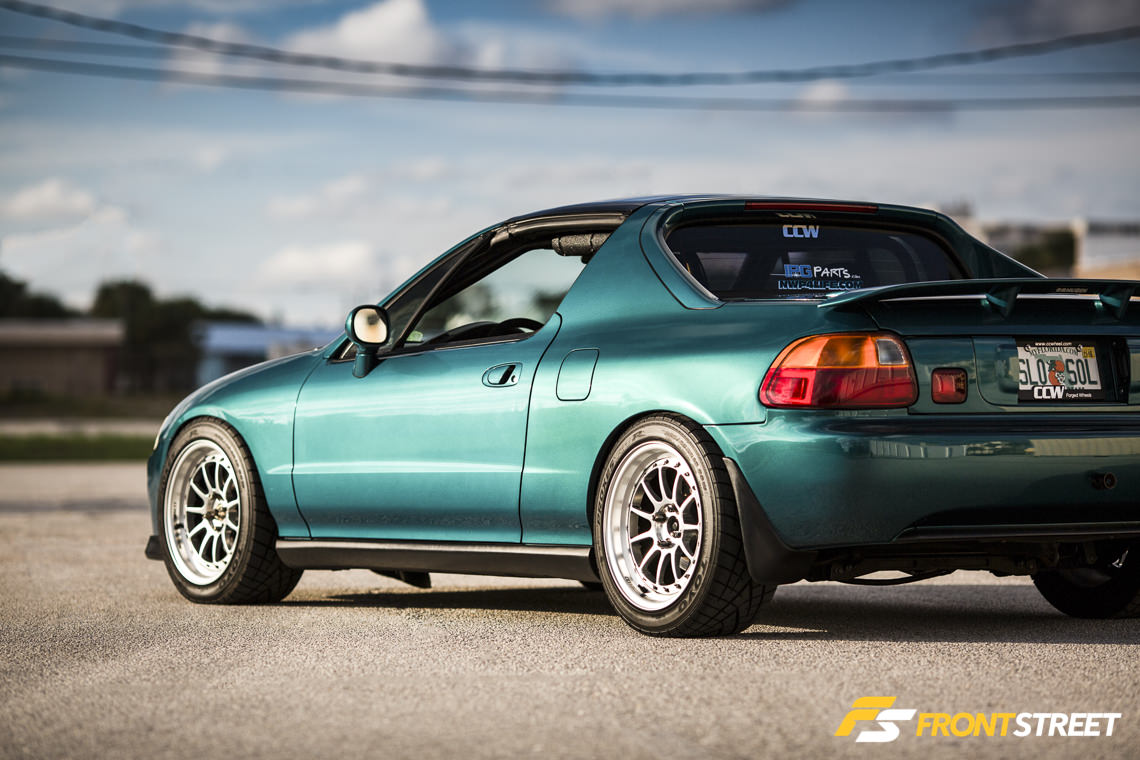

While the car had been his daily driver and only vehicle for the previous eight years, he purchased a Chevy Trailblazer SS to take over daily driver duties, and then tore the del Sol down for a complete overhaul. Like many people faced with plans of a full rebuild, at the outset, Gillette didn’t know which direction to take his car or engine. Going through numerous build plans, he finally set upon building the car to handle whatever power numbers he could create, with dreams of a single-digit pass down the dragstrip.


The car’s teardown began early in 2012, when the chassis received a complete restoration including its engine bay and undercarriage. Nearly every piece of the car was stripped down, painted, replaced, or refurbished to breathe new life into the dated Honda. The chassis was taken to Tim Christ at Coast Chassis Design to be fitted with a roll cage. Gillette also decided factory hardware wasn’t up to snuff as he switched over to a more intricate and unique – albeit incredibly expensive – alternative from hardware mecca ARP.


“Literally, any bolt I could touch was replaced with a 12-point stainless ARP fastener. I would guess easily 250-plus pieces on the car, and that’s a low-end estimate.”


The engine plans included taking the block to Buddy Hendricks at Florida Performance Machine and increasing displacement up to 2.0-liters, while adding AEBS sleeves and O-rings, CP 84mm Pistons with upgraded wristpins, and Carrillo Pro H-Beam rods with CARR rod bolts. The built block was then mated to a stock port B18C1 head filled with Ferrea valvetrain, custom grind Web camshafts, and equipped with an Edelbrock Victor X intake manifold and 75MM throttle body.

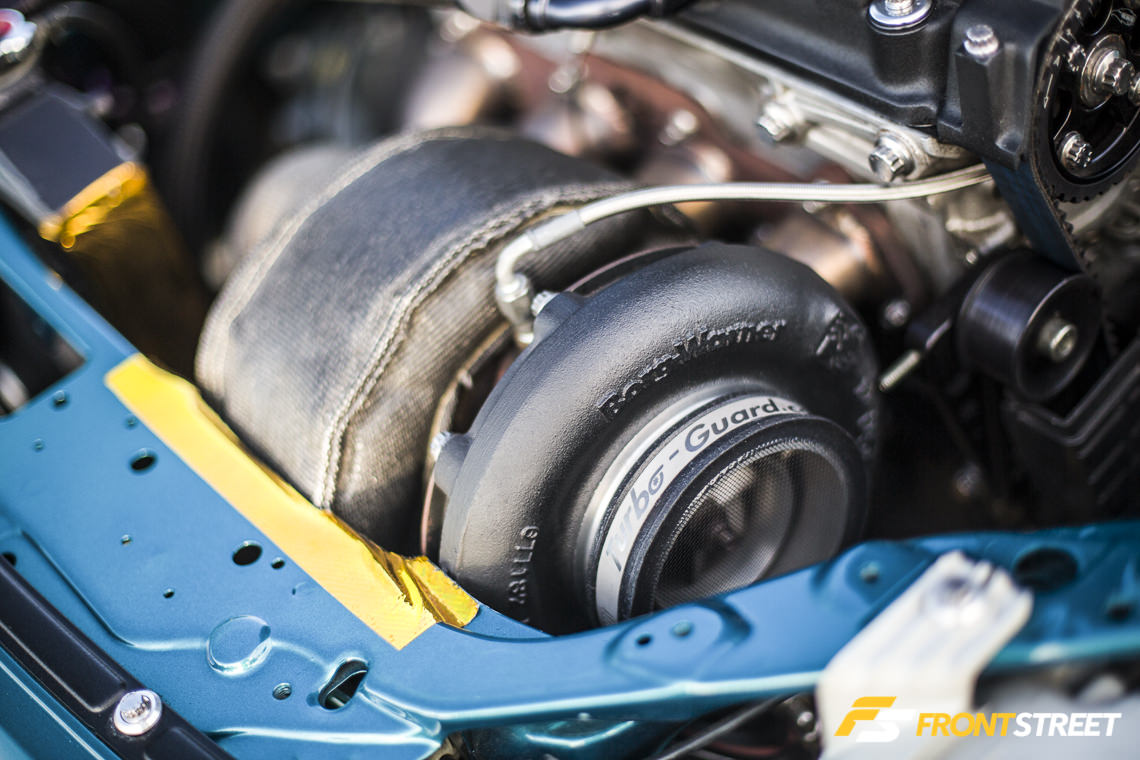

In order to perform at its peak, the engine needed an adequate turbo system feeding it boost. Gillette sourced a JDL Designs top-mount manifold and 3.5-inch downpipe to round out the exhaust connections on the Borg Warner S300 series 62MM Turbo. Dual TiAL MVS wastegates and a TiAL Q blow-off-valve keep boost levels in the appropriate range, while a custom T1 race intercooler cools the boost for optimum performance.
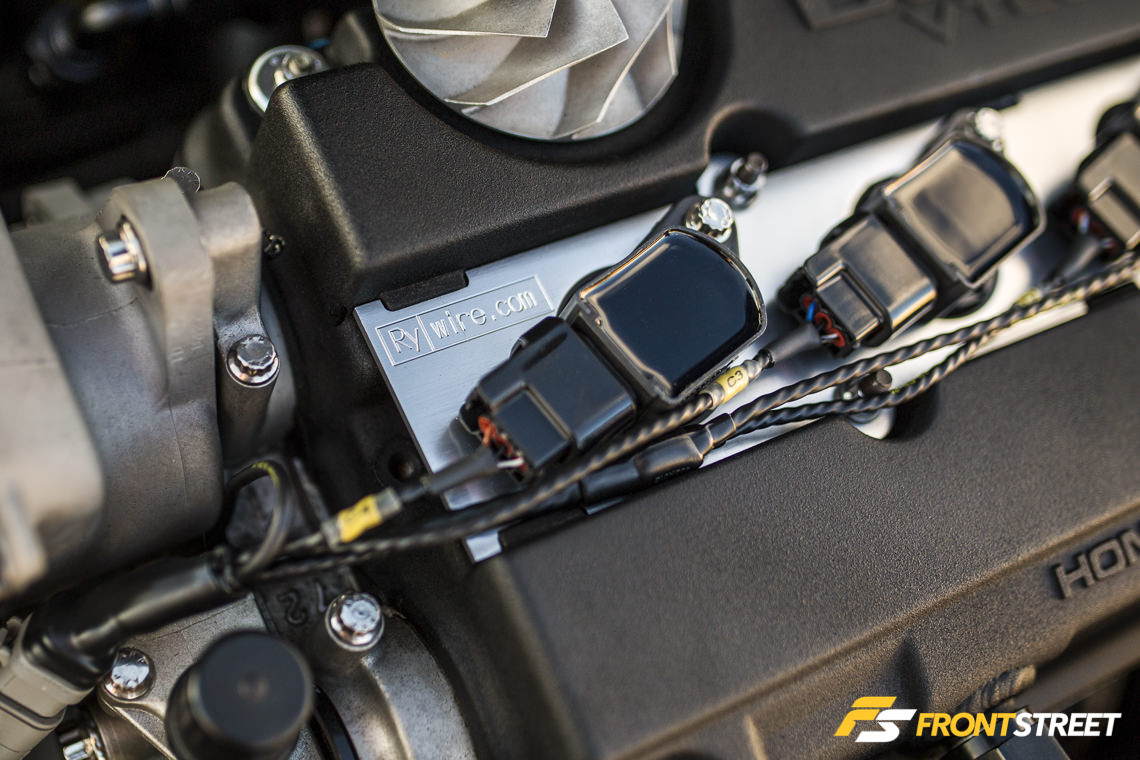


He equipped the car with an FCS nine-gallon fuel cell, dual Bosch 044 fuel pumps, Injector Dynamics ID1000 injectors, and a Weldon FPR and filters. The volume passes through -8AN feed lines and -6AN return lines. The engine’s upgraded air/fuel ratio is calibrated through the use of a Wireworx Stage 4 Milspec wiring harness, and a Hondata S300 v.3 engine management system, with a Hondata coil pack retrofit kit igniting the whole combination.



Rounding out the drivetrain additions, Gillette opted to keep OEM gears inside the OEM B18C1 transmission. Performance improvements were made by equipping the driveline with Synchrotech carbon synchros, a Quaife limited-slip differential, and a Tilton Cerametallic twin-disc clutch and hydraulic throwout bearing, then passing all the power through Driveshaft Shop 5.9 axles.
By September of 2012 – just months after the teardown had begun – the del Sol was already buttoned up and on the dyno pushing 32psi of boost; at this level the diminutive four-cylinder produced stout numbers – a whopping 696-horsepower at the wheels, in a car that weighs 2350 pounds.
“The car was a handful to say the least, but an absolute blast to drive,” Gillette says.



A month after the reincarnated del Sol was back up and running, Gillette entered his first event with the new build and placed second overall in Sport Front Wheel Drive (SFWD). Unfortunately, the beginner’s luck subsided, and he went down the rabbit hole, with a long road of frustration and technical failures thwarting his enjoyment of the car, as he was plagued with transmission issues on nearly every pass in the following years. He participated in every drag racing event he could until March of 2015, and despite never getting a clean pass he strapped on a set of 24.5×9-13 Mickey Thompson slicks and was able to squeeze a personal best 10.4-second pass at 144 mph – just shy of his 9-second goal by a few tenths of a second. In those few years he learned a lot about how expensive and frustrating competitive drag racing could be.
“The number of times left stranded just off the starting line, or at the end of the track with a broken gearbox is definitely a memory I could stand to let go,” he says.


Fast forward to November of 2015. In an effort to end his frustration and adore his beloved del Sol again, the car received its final overhaul. The new goal? To dial back the car’s strict racing duties in favor of a more street-friendly setup.. Now in his twelfth year of ownership, as he moves onto another project, the time has come to part out the chassis to fund a new build, although Gillette admits he may never part ways with the shell, and hopes he can rebuild it to a mild state at some time in the future.

The del Sol might never have hit its goal of a single-digit pass, but the desire still lives inside Gillette. Many people dream of building a high-power drag racing vehicle but few take the leap into the competitive realm of drag racing. Even fewer get the notoriety deserved for taking such a leap, whether it’s being immortalized in their favorite publication, clicking off their desired elapsed time, or accruing a coveted championship. These are the unsung heroes of our automotive culture, the doers who never quite make it to the big time but press on with passion in their eyes. They are you, they are me; it’s all of us continuing to fuel our own passion – and others – with our unrelenting pursuit of performance.
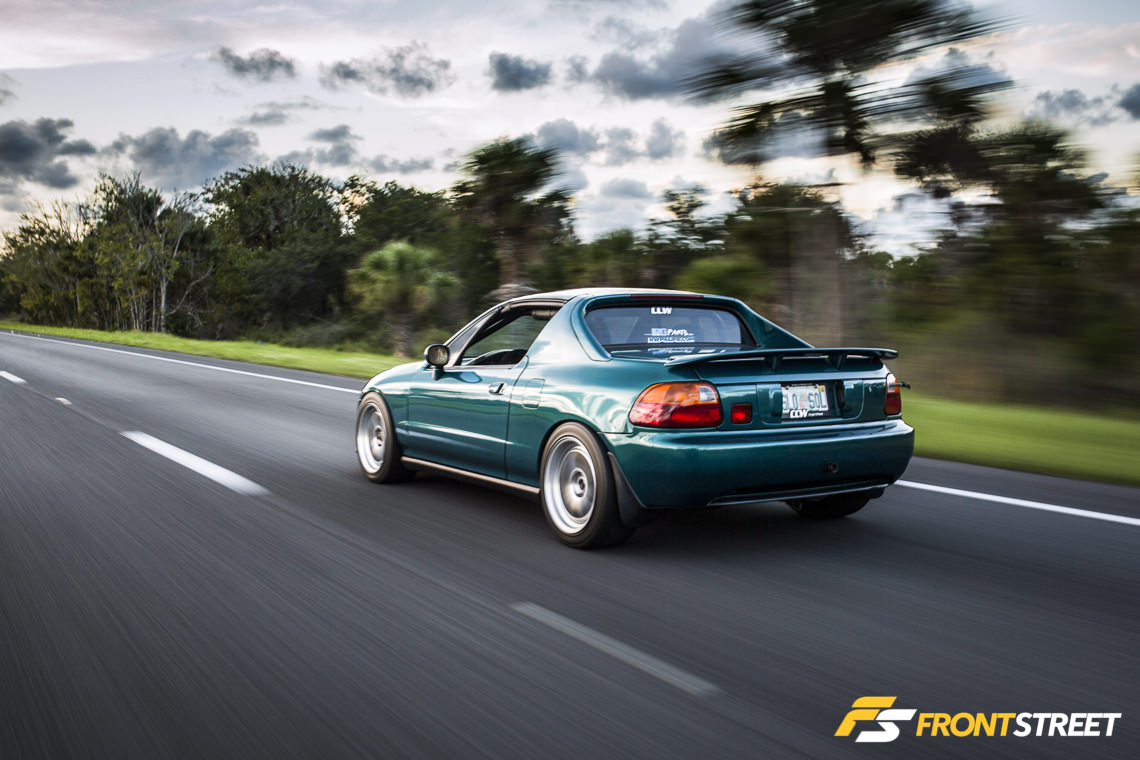
“I would like to thank my father. He has been my number-1 supporter throughout everything. He is the one who got me hooked on this addiction, and has spent countless nights helping me get the car ready for a meet or race, swap transmissions, push the car back on the trailer when it breaks. He is always there to lend a hand, and is my biggest supporter at the track. Although he may shake his head at the time and money I’ve spent on the car over the years, he is always there to help,” says Gillette.
“And James Innes and Tom Creen from IPG Parts – without these two, the car never would have made a pass. These guys busted ass countless days and nights to help me build the car initially, prep the car for events, support and help crew at the track, and spend way too much money (ha!). These guys are great at what they do, and are great friends.”

